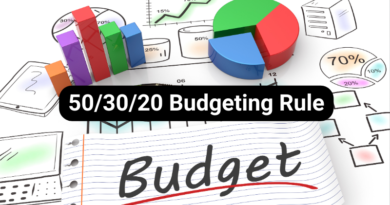The Psychology of Spending: How to Control Your Money Mindset
1. Introduction
Spending money isn’t just about numbers—it’s deeply tied to emotions, habits, and mindset. Many people struggle with impulse buying, overspending, or living paycheck to paycheck, often without understanding why. The psychology of spending sheds light on these behaviors and provides tools to regain control. This post explores why we spend, how to identify spending triggers, and practical strategies to develop a healthier relationship with money.

2. Understanding the Psychology of Spending
1. Emotional Spending
Many people spend money as an emotional response to feelings like stress, boredom, or sadness. For instance, retail therapy—buying items to feel better—provides temporary comfort but often leads to regret or financial strain later.
2. The Reward System
Spending triggers the brain’s dopamine release, which creates a pleasurable sensation. This “spending high” is short-lived, leading to repeated purchases to maintain that feeling, much like other addictive behaviors.
3. Social and Cultural Influences
Society and culture play a significant role in spending habits:
- Social Media: Platforms like Instagram or TikTok often promote a lifestyle of constant consumption.
- Peer Pressure: Friends or family can influence spending on dining, vacations, or luxury items to “keep up.”
- Cultural Norms: Expectations to celebrate milestones (e.g., weddings, holidays) lavishly can lead to overspending.
4. Instant Gratification vs. Long-Term Rewards
We’re wired to seek immediate satisfaction, which often overshadows long-term financial goals like saving for retirement. Choosing instant gratification, such as buying new gadgets, can derail plans for long-term stability.
5. Cognitive Biases
Psychological tendencies like anchoring and loss aversion heavily influence spending:
- Anchoring: Being influenced by an initial price, such as buying something on sale because it seems like a “deal.”
- Loss Aversion: The fear of missing out (FOMO) on discounts or limited-time offers can drive unnecessary purchases.
3. Signs You Need to Address Your Money Mindset
- Impulsive Purchases: Regularly buying things you don’t need or can’t afford.
- Living Paycheck to Paycheck: Struggling to save despite earning enough.
- Emotional Triggers: Using spending as a coping mechanism for stress or unhappiness.
- Debt Accumulation: Increasing reliance on credit cards or loans to maintain lifestyle expenses.
- Guilt or Regret: Consistently feeling bad about purchases after the fact.
4. How to Understand Your Money Mindset
1. Reflect on Your Financial Habits
Take time to analyze your spending decisions. Keep a journal to log purchases and note the emotions or triggers behind them. This helps identify patterns and areas for improvement.
2. Identify Your Money Beliefs
What do you believe about money? For example:
- “Money is meant to be spent.”
- “I’ll never have enough money.” These beliefs often stem from childhood experiences or cultural influences and shape how you handle finances today.
3. Assess Your Relationship with Money
Ask yourself:
- Does money bring you stress or security?
- Do you use money to display status or fulfill emotional needs? Understanding your relationship with money helps you pinpoint areas to change.
5. Strategies to Control Your Money Mindset
1. Practice Mindful Spending
Pause before making purchases. Ask yourself:
- Is this necessary?
- Does it align with my values or financial goals? The “24-hour rule” for non-essential spending can help curb impulse buying.
2. Set Clear Financial Goals
Establish specific, measurable goals:
- Short-Term Goals: Save for a vacation or pay off a small debt.
- Long-Term Goals: Build an emergency fund or invest for retirement. Goals provide focus and reduce emotional spending.
3. Create a Budget That Reflects Your Values
A budget isn’t restrictive—it’s a tool to spend intentionally. Allocate funds to what matters most, like experiences or financial security, rather than unnecessary items.
4. Limit Exposure to Spending Triggers
- Reduce time spent on social media platforms promoting consumerism.
- Unsubscribe from promotional emails or newsletters that encourage impulse buying.
- Avoid environments, like malls or online sales, where you’re likely to overspend.
5. Reframe Your Mindset About Money
Replace negative or impulsive thoughts with positive ones:
- From: “I deserve this treat.”
- To: “I deserve financial stability.” Focus on how saving aligns with your values and future happiness.
6. Automate Good Financial Habits
Set up automatic transfers to savings accounts or retirement funds. Automation ensures consistency and removes the temptation to spend instead.
6. The Role of Emotional Management in Spending
1. Recognize Emotional Triggers
Identify what drives emotional spending—stress, boredom, or pressure? For example:
- Stress might lead to treating yourself with online shopping.
- Boredom may trigger browsing and unnecessary purchases.
2. Find Alternatives to Spending
Replace shopping with healthier habits:
- Exercise, journaling, or meditating to cope with stress.
- Engaging in hobbies that bring fulfillment without financial cost.
3. Reward Yourself Without Overspending
It’s okay to treat yourself but do so mindfully:
- Allocate a small “fun money” budget.
- Celebrate financial milestones (e.g., paying off debt) with low-cost rewards.
7. Building a Healthy Money Mindset
1. Focus on Long-Term Gratification
Visualize the benefits of saving or investing. For instance:
- A debt-free home.
- Early retirement. This perspective helps prioritize long-term rewards over short-term indulgences.
2. Develop Financial Literacy
Knowledge empowers you to make informed decisions:
- Learn about budgeting, investing, and debt management.
- Use tools or take courses to boost financial confidence.
3. Surround Yourself with Positive Influences
Join groups or communities focused on financial health. Share experiences and advice with like-minded individuals to stay motivated.
4. Practice Gratitude and Contentment
Shift focus from material possessions to appreciating what you have. Regular gratitude journaling reduces envy and the desire to “keep up” with others.
8. Overcoming Common Challenges
1. Breaking the Cycle of Emotional Spending
Develop healthier coping mechanisms, such as therapy or support groups, to address the root causes of emotional spending.
2. Dealing with Setbacks
Mistakes happen. Instead of dwelling on them, reassess your goals and make adjustments. Use setbacks as learning opportunities.
3. Combating Social Pressure
Learn to say no to peer-driven spending. Suggest cost-free activities or alternatives that align with your budget and values.
9. Tools and Resources to Help Manage Spending
- Budgeting Apps: Mint, YNAB, or EveryDollar for expense tracking.
- Financial Books: “Your Money or Your Life” by Vicki Robin or “The Psychology of Money” by Morgan Housel.
- Online Courses and Workshops: Programs to develop financial literacy and money mindset skills.
10. Conclusion
Understanding the psychology behind spending helps you regain control of your finances. By identifying emotional triggers, setting clear goals, and practicing mindful habits, you can transform your money mindset. A healthy relationship with money not only leads to financial stability but also improves your overall well-being. Start small, and remember: every step you take toward managing your mindset brings you closer to financial freedom and peace of mind.



